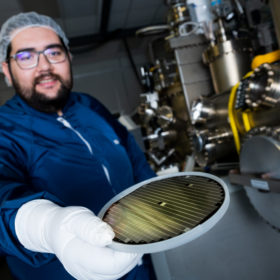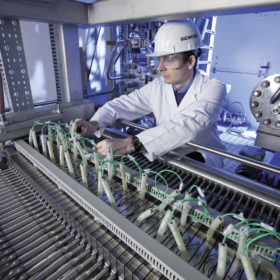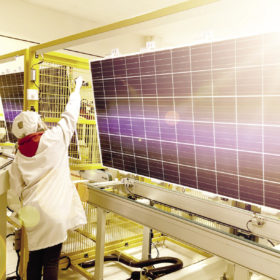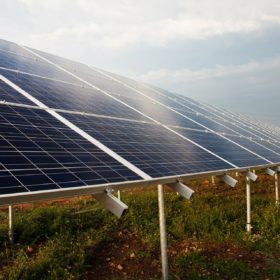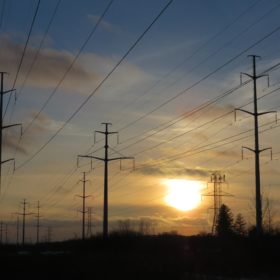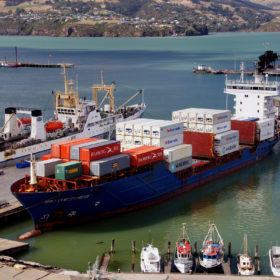Germanium use reduced in GaAs solar cells by new two-step process
Researchers from Canada have unveiled a new germanium deposition process which is said to eliminate threading dislocations and be significantly cheaper than previous approaches. The scientists say their technique creates nanovoids on the surface of the germanium layer which can attract and annihilate undesirable dislocations.
Renewables and geopolitics: The United States
An accelerated transition to renewables could go either way, regarding the United States’ unique geopolitical strength. According to Indra Overland – head of the Center for Energy Research at the Norwegian Institute for International Affairs – the U.S. could surrender a major advantage if it abandons fossil fuel. The nation could, however, remain dominant in the global energy sector if it continues to lead on innovation and clean energy tech-related intellectual property.
The slow, inexorable rise of green hydrogen
The International Renewable Energy Association says the integration of hydrogen into the energy transition will not happen overnight and electrolysis costs will not be halved until the 2040s. That hydrogen and related products could revolutionize the world energy landscape, however, is not in doubt.
Canada’s Saskatchewan province to halt net metering for solar
Utility SaskPower is set to close the net metering open to systems up to 100 kW in size once a 16 MW cumulative generation capacity limit is reached in the province.
Canadian Solar raises efficiency record for mono cast cell
The result was verified by Germany’s Institute für Solarenergieforschung GmbH. The Canadian-Chinese manufacturer claims to have achieved 22.8% efficiency for its multi-crystalline P5 cell, produced with a mono cast manufacturing process.
Solar-plus-storage vs grid enhancement part II
Grid expert Andrea Mansoldo tells pv magazine how energy markets based on solar and storage are feasible as an alternative to costly grid infrastructure work. He says around 6 GWh of battery capacity may be a good alternative to building 1000km of power line or an AC 750 kV high-voltage line.
Solar-plus-storage vs grid enhancement
Ontario’s Independent Electricity System Operator will implement a pilot project for a future electricity market based on PV, storage and smart power consumption. The utility says the project will be a cheaper, more efficient alternative to expanding grid infrastructure.
Canadian researchers have done the math on optimizing PV output
Mathematicians at Canada’s University of Waterloo who turned their attention to solar power have developed an algorithm they say offers better control over PV plant output. The researchers estimate the algorithm could improve the output of a 100 MW power plant by almost a million kilowatt-hours per year.
Alberta approves Canada’s largest PV project – free of subsidy and planned on a merchant basis
The $376 million Travers Solar project has had the nod from the Alberta Utilities Commission. Construction on the subsidy-free facility, which will operate on a merchant basis, will start next year with an operational date set for 2021.
Canada extends trade measures against Chinese metal silicon
With the anti-dumping and countervailing duties imposed in November 2013 set to expire nine months ago, the Canadian International Trade Tribunal has extended them for another five years, ruling their expiry would harm the nation’s only domestic manufacturer.
